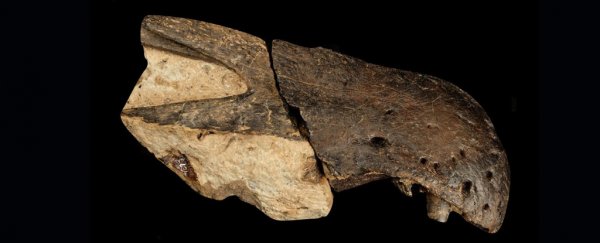Paleontologists in the UK have found bones at the Isle of Wight that they believe belong to two new species of predatory dinosaur.
The bones suggest their owners were both species of spinosaurid – the family of theropods that includes the well-known Spinosaurus genus.
Between 2013 and 2017, researchers unearthed a collection of over 50 bones, many from an excavation site at a beach near the village of Brighstone. Here, a fossil-rich geological feature called the Wessex Formation, dating back to the Early Cretaceous, is exposed for relatively easy access.
When it comes to iconic spinosaurid discoveries, the surprisingly complete Baryonyx walker – found at a quarry in Surrey in 1983 – really set the scene for paleontologists describing this particular group of animals.
According to lead author of the new study, paleontologist Chris Barker from the University of Southampton, the skulls of the newly found bones differ "not only from Baryonyx, but also one another, suggesting the UK housed a greater diversity of spinosaurids than previously thought."
 Artist impression of C. inferodios in the foreground, R. milnerae in the background. (Anthony Hutchings)
Artist impression of C. inferodios in the foreground, R. milnerae in the background. (Anthony Hutchings)
According to co-author Darren Naish, an expert in British theropod dinosaurs, their discovery was simultaneously expected and surprising: "We've known for a couple of decades now that Baryonyx-like dinosaurs awaited discovery on the Isle of Wight, but finding the remains of two such animals in close succession was a huge surprise."
Spinosaurids are known for their large crocodile-like skulls. Scientists believe their physiology would have helped them find prey in both aquatic and terrestrial environments, and they had surprisingly similar diets.
"A 'generalist' or varied diet may have included a range of terrestrial and aquatic prey and was potentially influenced by individual size or habitat. It has been suggested that spinosaurids became increasingly aquatic during their evolution and that highly modified taxa like Spinosaurus engaged in specialized underwater pursuit predation," noted the authors of the study published in Scientific Reports.
"It might sound odd to have two similar and closely related carnivores in an ecosystem, but this is actually very common for both dinosaurs and numerous living ecosystems," adds David Hone from Queen Mary University of London, who also co-authored the study.
 One of the excavation site locations. (Jeremy Lockwood)
One of the excavation site locations. (Jeremy Lockwood)
Of the two newly identified species, the first has been named Ceratosuchops inferodios, which translates as "horned crocodile-faced hell heron". This name refers to the likely hunting style of the newly found theropod, similar in many ways to that of a modern day heron – these large water birds mainly feast on aquatic creatures in waterways, but will also hunt down more terrestrial meals, such as rodents.
The second specimen was named Riparovenator milnerae. This translates to "Milner's riverbank hunter", in honor of the late British paleontologist Angela Milner. Milner was responsible for studying and naming Baryonyx, with her work greatly updating our understanding of these unique predators.
While the skeletal remains were incomplete, the researchers estimate that both Ceratosuchops and Riparovenator would have measured around nine meters in length.
The Early Cretaceous rocks where the bones were found tell a tale of an ancient flood plain environment with a Mediterranean-like climate. Remains of burnt wood seen throughout the cliffs suggest forest fires would occasionally spread across the landscape.
Large rivers and other bodies of water likely attracted large predatory dinosaurs who would have fed on the fish, sharks and crocodiles that lived there.
In addition to describing the two new predators, the authors of the study also note that their analysis – in contrast to some previous research indicating a single dispersal event – supports the finding that spinosaurids first evolved in Europe, "followed by at least two Early Cretaceous migrations to Africa."
The fossils will be available for public viewing at the Dinosaur Isle Museum at Sandown.
The paper was published in the journal Scientific Reports.
